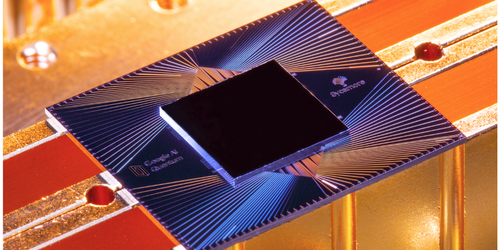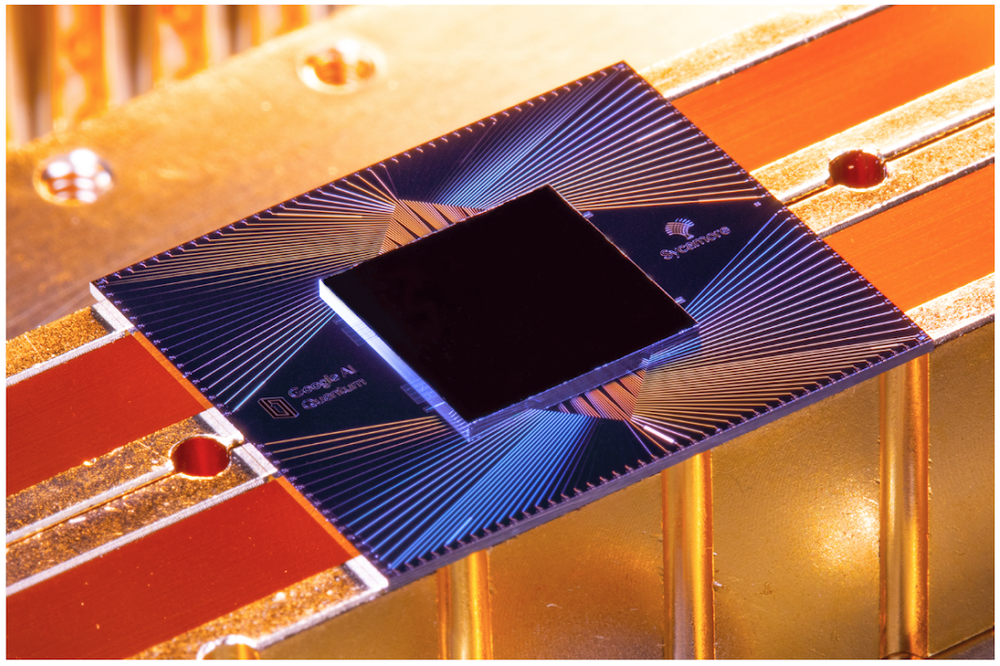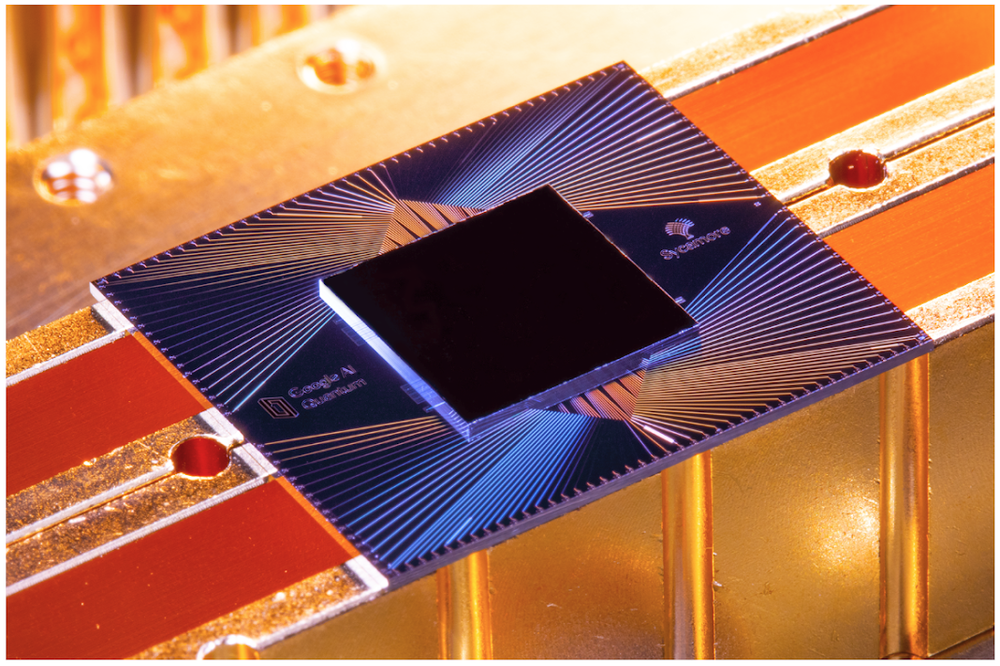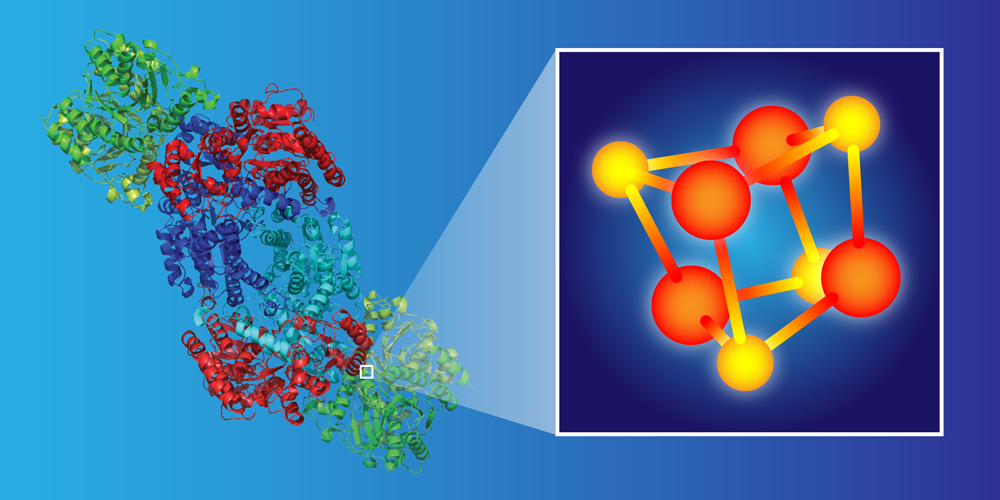
Simulations Using a Quantum Computer Show the Technology’s Current Limits
• Physics 15, 175
Quantum circuits still can’t outperform classical ones when simulating molecules.
E. Lucero/Google
Quantum computers promise to directly simulate systems governed by quantum principles, such as molecules or materials, since the quantum bits themselves are quantum objects. Recent experiments have demonstrated the power of these devices when performing carefully chosen tasks. But a new study shows that for problems of real-world interest, such as calculating the energy states of a cluster of atoms, quantum simulations are no more accurate than those of classical computers [1]. The results offer a benchmark for judging how close quantum computers are to becoming useful tools for chemists and materials scientists.
Richard Feynman proposed the idea of quantum computers in 1982, suggesting they might be used to calculate the properties of quantum matter. Today, quantum processors are available with several hundred quantum bits (qubits), and some can, in principle, represent quantum states that are impossible to encode in any classical device. The 53-qubit Sycamore processor developed by Google has demonstrated the potential to perform calculations in a few days that would take many millennia on current classical computers [2]. But this “quantum advantage” is achieved only for selected computational tasks that play to these devices’ strengths. How well do such quantum computers fare for the sorts of everyday challenges that researchers studying molecules and materials actually wish to solve?
Garnet Chan of the California Institute of Technology and his co-workers set out to answer this question by performing simulations of a molecule and a material using a 53-qubit Google processor called Weber, based on Sycamore. “We did not anticipate learning anything new chemically, given how complex these systems are and how good classical algorithms are,” says Chan. “The goal was to understand how well the Sycamore hardware performs for a physically relevant class of circuits with a physically relevant metric of success.”
The team selected two problems of current interest, without any consideration of how well suited they might be to a quantum circuit. The first involves calculating the energy states of an 8-atom cluster of iron (Fe) and sulfur (S) found in the catalytic core of the enzyme nitrogenase. This enzyme breaks strong bonds in nitrogen molecules as the first step in an important biological process called nitrogen fixation. Understanding the chemistry of this process could be valuable for developing artificial nitrogen-fixing catalysts for the chemical industry.
Second, the team sought to deduce the collective behavior of magnetic spins in the crystalline material alpha-ruthenium trichloride ( -RuCl3), which is thought to adopt an exotic quantum phase called a spin liquid at low temperatures [3]. Studying such states is part of the larger project of exploring quantum phenomena in materials.
The ground electronic states and the low-energy excitations of the two systems are determined by how the electron spins of the atoms interact with one another. These spins could be encoded in single qubits and their interactions simulated by coupling the qubits in circuits that reflect the structures of the two systems.
One of the key obstacles to accurate quantum simulations is noise—random errors in both the switching of the “gates” that perform quantum logic operations and in the reading of their output states. These errors accumulate and restrict the number of gate operations a computation can enact before the noise dominates. The researchers found that simulations with more than 300 gates were overwhelmed by noise. But the more complex the system, the more gates are needed. The Fe-S cluster, for example, has long-range interactions between spins; to be represented accurately, such interactions require many gates.
Because of these challenges, the simulations on the Weber chip were rather limited. For example, the simulations provided predictions for the energy spectra of the Fe-S cluster and the heat capacity of -RuCl3 reasonably well—but only if the simulated systems were not too big. For -RuCl3 the team could only obtain meaningful results for a very small 6-atom chunk of the crystal lattice; if they increased the size to just 10 atoms, the noise overwhelmed the output. And the constraints on gate operations meant that only about one-fifth of Weber’s quantum resources could be used for the calculation. However, Chan and colleagues could increase this usage to half the resources when they switched to simulating a model system better suited to Weber’s specific circuit architecture.
Chan says that it’s hard to see quantum circuits performing much better for problems like this until there are better ways to reduce the noise or to correct for errors. (The schemes developed so far don’t permit full quantum error correction.)
“These results are state of the art, and they show the challenges to be overcome in terms of future device performance,” says Alán Aspuru-Guzik of the University of Toronto, a specialist in using quantum computing in chemistry and materials. But the capabilities have steadily increased since the earliest quantum computers in the 2000s, as demonstrated with this new work, he says. Peter Love, a specialist in quantum simulations at Tufts University, Massachusetts, is upbeat about the findings. “These results are both exciting and daunting,” he says. “Compared to our expectations in 2005, they are absolutely amazing, but they also show how much work is still ahead of us.”
–Philip Ball
Philip Ball is a freelance science writer in London. His latest book is The Modern Myths (University of Chicago Press, 2021).
References
- R. N. Tazhigulov et al., “Simulating models of challenging correlated molecules and materials on the Sycamore quantum processor,” PRX Quantum 3, 040318 (2022).
- F. Arute et al., “Quantum supremacy using a programmable superconducting processor,” Nature 574, 505 (2019).
- H. Li et al., “Giant phonon anomalies in the proximate Kitaev quantum spin liquid –,” Nat. Commun. 12, 3513 (2021).





